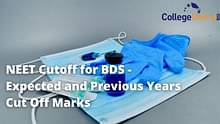इकाई 1 | ठोस अवस्था (Solid state) | - क्रिस्टलीय ठोसों का बंधन बलों की प्रकृति के आधार पर वर्गीकरण; आणिवक, आयनिक, सहसंयोजक एवं धात्विक ठोस (Classification of solids based on different binding forces, molecular, metallic solids, ionic covalent)
- अक्रिस्टलीय एवं क्रिस्टलीय ठोस (प्रारंभिक बोध) (Amorphous and crystalline solids)
- द्विविया एवं त्रिविया जालकों में एकक कोष्ठिका (Unit cell in 2-D and 3-D lattices)
- एकक कोष्ठिका के घनत्व की गणना (Calculation of density of unit cell)
- ठोसों में संकुलन; संकुलन क्षमता; रिक्तियाँ (Packing in solids, packing efficiency, and voids)
- घनीय एकक कोष्ठिका में प्रति एकक कोष्ठिका अवयवी कणों की संख्या (Number of atoms per unit cell in a cubic unit cell)
- विद्युतीय एवं चुंबकीय गुण (Electrical and magnetic properties)
- धातुओं का बैंड सिद्धांत (Band theory of metals)
- चालकों, इंसुलेटर, n-प्रकार तथा p - प्रकार के अर्धचालक (Conductors, semiconductors and insulators and n and p-type semiconductors)
|
युनिट 2 | विलयन (Solutions) | - विलयनों के प्रकार (Types of solutions)
- ठोसों का द्रवों में विलयनों की सांद्राता को व्यक्त करना (Expression of concentration of solids in liquids)
- गैसों की द्रवों में विलेयता (The solubility of gasses in liquids)
- ठोस विलयन, वाष्प दाब का आपेक्षिक अवनमन (Solid solutions, the relative lowering of vapour pressure)
- राउल्ट का नियम (Raoult’s law)
- क्वथनांक का उन्नयन (Elevation of B.P.)
- अणुसंख्य गुणधर्मों द्वारा आण्विक द्रव्यमानों को ज्ञात करना (Determination of molecular masses using colligative properties)
- वान्ट हॉफ कारक (Van't Hoff factor)
|
इकाई 3 | वैद्युत रसायन (Electrochemistry) | - रेडॉक्स अभिक्रियाएँ (Redox reactions)
- वैद्युतअपघटनी विलयनों का चालकत्व (Conductance in electrolytic solutions)
- विशिष्ट एवं मोलर चालकता; सांद्रता के साथ मोलर चालकता में परिवर्तन (Specific and molar conductivity variations of conductivity with concentration)
- कोलराउश नियम (Kohlrausch’s Law)
- वैद्युत अपघटन एवं वैद्युत अपघटन के नियम (प्रारंभिक बोध) (Electrolysis and laws of electrolysis)
- लेड संचायक, सेल का Emf (Lead accumulator, EMF of a cell)
- मानक इलैक्ट्रोड विभव (Standard electrode potential)
- नेर्न्स्ट समीकरण; एवं रसायनी सेलों के लिए इसके अनुप्रयोग (Nernst equation and its application to chemical cells)
- ईंधन सेल (Fuel cells)
- संक्षरण (Corrosion)
|
इकाई 4 | रासायनिक बलगतिकी (Chemical Kinetics) | - अभिक्रिया वेग (औसत एवं तात्कालिक) (Rate of a reaction)
- अभिक्रिया वेग को प्रभावित करने वाले कारक (Factors affecting rates of reaction)
- तापमान, उत्प्रेरक, सांद्रता (Concentration, temperature, catalyst)
- अभिक्रिया की कोटि एवं अभिक्रिया की आण्विकता (Order and molecularity of a reaction)
- वेग नियम एवं Spectic वेग स्थिरांक (Rate law and specific rate constant)
- समाकलित वेग समीकरण एवं अर्धायु (Integrated rate equations, and half-life)
- संघट्ट सिद्धांत की संकल्पना (Concept of collision theory)
- सक्रियण ऊर्जा (Activation Energy)
- आर्रेनिअस समीकरण (Arrhenius equation)
|
इकाई 5 | पृष्ठ रसायन (Surface Chemistry) | - अधिशोषण (Adsorption)
- गैसों के ठोसों पर अधिशोषण को प्रभावित करने वाले कारक (Factors affecting adsorption of gasses on solids)
- उत्प्रेरण; समांगी एवं विषमांगी, सक्रियता एवं वरणात्मकता (Catalysis, homogeneous and heterogeneous, activity and Selectivity)
- एन्जाइम उत्प्रेरण (Enzyme catalysis)
- कोलॉइडल अवस्था true विलयनों, कोलॉइड और निलंबनों में विभेदन (Colloidal state: the distinction between true solutions, colloids,)
- द्रवरागी, द्रवविरागी, बहुआण्विक तथा वृहदाण्विक कोलॉइड; कोलॉइडों के गुणधर्म (Suspensions, lyophilic, lyophobic multimolecular and macromolecular colloids; properties of colloids)
- टिन्डल प्रभाव (Tyndall effect)
- बाउनी गति, वैद्युत कण संचलन, स्कंदन (Brownian movement, Electrophoresis, Coagulation)
- इमल्शन - - इमल्शन के प्रकार (Emulsions and types of emulsions)
|
इकाई 6 | तत्वों के निष्कर्षण के सिद्धांत एवं प्रक्रम (General Principles and Processes of Isolation of Elements) | - निष्कर्षण विधियाँ एवं सिद्धांत (Principles and methods of extraction)
- वैद्युत अपघटनी विधि (Refining occurrence)
- ऐलुमिनियम, कॉपर, जिंक, और आयरन के निष्कर्षण के सिद्धांत (Principles of extraction of aluminium, copper, zinc, and iron)
|
इकाई 7 | p - ब्लॉक के तत्व (p-Block Elements) | - वर्ग 15 के तत्व (Group 15 Elements)
- वर्ग 16 के तत्व (Group 16 Elements)
- वर्ग 17 के तत्व (Group 17 Elements)
- वर्ग 18 के तत्व (Group 18 Elements)
|
इकाई 8 | d - एवं f - ब्लॉक के तत्व (d and f block Elements) | - इलेक्ट्रॉनिक विन्यास (General electronic configuration)
- संक्रमण तत्वों की उपलब्धता एवं गुणधर्म (Occurrence and characteristics of transition metals)
- संक्रमण धातुओं की प्रथम पंक्ति के गुणधर्मों में सामान्य रुझान, धात्विक अभिलक्षण,आयनन एन्थैलपी, ऑक्सीकरण अवस्थाएँ, आयनिक त्रिज्यांए, वेग, उत्प्रेरकीय गुण, चुंबकीय गुण, अंतराकाशी यौगिक, मिश्र धातुओं का बनना (General trends in properties of the first-row transition metals – metallic character, ionization enthalpy, colour, catalytic property, magnetic properties, interstitial compounds, and alloy formation)
- K2C120, एवं KMnO4 का विरचन एवं गुणधर्म (Preparation and properties of K2Cr2O7 and KMnO4)
- लैन्थेनॉयड – ऐक्टिनॉयड (Lanthanoids & Actinoids)
|
इकाई 9 | उपसहसंयोजन यौगिक (Coordination compounds) | - परिचय (Introduction)
- लिगन्ड (Ligands)
- समन्वय संख्या (Coordination number)
- वर्ण, चुंबकीय गुण और आकृति (Colour, magnetic properties and shapes)
- एककेंद्रकीय उपसहसंयोजन यौगिकों का नामकरण (IUPAC nomenclature of mononuclear coordination compounds)
- आबंधन (Bonding)
- वर्नर का सिद्धांत - VBT (Werner’s theory VBT)
- CFT, समावयता उपसहसंयोजन यौगिकों का महत्व (CFT, isomerism, importance of coordination compounds)
|
इकाई 10 | हैलोएल्केन्स तथा हैलोऐरीन्स (Haloalkanes and Haloarenes) | - हैलोएल्केनस : नामपद्धति C-X आबंध की प्रकृति, भौतिक और रासायनिक गुण (Haloalkanes: Nomenclature, nature of C-X bond, physical and chemical properties,)
- प्रतिस्थापन अभिक्रियाओं की क्रियाविधि (Mechanism of substitution reactions)
- ध्रुवण घूर्णन (Optical rotation)
- हैलोऐरीन्स: नामपद्धति C-X आबंध की प्रकृति, प्रतिस्थापन अभिक्रियाएँ (Haloarenes: Nature of C-X bond, substitution reactions)
- डाइक्लोरोमेथेन, ट्राइक्लोरोमेथेन, टेट्राक्लोरोमेथेन, आयडोफाँर्म, फ्रेऑन डीडीटी के उपयोग और पर्यावरणीय प्रभाव (Uses And Environmental Effects of dichloromethane, trichloromethane, tetrachloromethane, freons, and DDT)
|
इकाई 11 | ऐल्कोहॉल, फ्रीनॉल एवं ईथर (Alcohols, Phenols, and Ethers) | - ऐल्कोहॉल: नामपद्धति; विरचन की विधियाँ; भौतिक और रासायनिक गुण (Alcohols: Nomenclature, methods of preparation, physical and chemical properties )
- प्राथमिक, द्वितीयक और तृतीयक एल्कोहॉल की पहचान (Identification of primary, secondary, and tertiary alcohols)
- निजीलीकरण की क्रियाविधि (विशेष संदर्भ में मेथेनॉल एवं ऐथेनॉल) (Mechanism of dehydration, uses, with special reference to methanol and ethanol)
- फ़ीनॉल नामपद्धति विरचन की विधियाँ भौतिक और रासायनिक गुण; फ़ीनल की अम्लीय प्रकृति; इलेक्ट्रॉनरागी प्रतिस्थापन अभिक्रियाएँ, फ़ीनॉल के उपयोग (Phenols: Nomenclature, methods of preparation, physical and chemical properties, acidic nature of phenol, electrophilic substitution reactions, and uses of phenols)
- ईथर: भौतिक और रासायनिक गुण, उपयोग नामपद्धति; विरचन की विधियाँ (Ethers: Nomenclature, methods of preparation, physical and chemical properties, and uses)
|
इकाई 12 | ऐल्डिहाइड, कीटोन एवं कार्बोक्सिलिक अम्ल (Aldehydes, Ketones, and Carboxylic Acids) | - ऐल्डिहाइड एवं कीटोन नामवृद्धि, कार्बोनिल समूह, की प्रकृति; विरचन की विधियाँ; भौतिक एवं रासायनिक गुण; नाभिकरागी योगज की क्रियाविधि (Aldehydes and Ketones: Nomenclature, nature of carbonyl group, methods of preparation, physical and chemical properties, addition, the reactivity of alpha hydrogen in aldehydes)
- a - हाइड्रोजन की अभिक्रियाशीलता कार्बोक्सिलिक अम्ल नामपद्धति; अम्लीय प्रकृति, विरचन की विधियाँ; भौतिक और रासायनिक 'गुण; उपयोग (Carboxylic Acids: Nomenclature, acidic nature, methods of preparation, physical and chemical properties, and its uses.)
|
इकाई 13 | नाइट्रोजन अंतर्विष्ट कार्बनिक यौगिक (Organic Compounds Containing Nitrogen) | - ऐमीन नामद्धति; वर्गीकरण; संरचना, विरचन की क्रियाविधि; भौतिक और रासायनिक गुण; उपयोग; प्राथमिक, द्वितीयक और तृतीयक ऐमीनों की पहचान (Amines: Nomenclature, classification, structure, methods of preparation, physical and chemical properties, uses, and tertiary amines)
- साइनाइड एवं आइसोसायनाइड प्रासंगिक स्थानों पर संदर्भ में उल्लेख किया जाएगा (Cyanides and Isocyanides – will be mentioned at relevant places in context)
- डाइऐज़ोनियम लवण; विरचन; रासायनिक अभिक्रियाएँ; सांश्लेषिक कार्बनिक केमिस्ट्री में इनका महत्व (Diazonium salts: Preparation, chemical reactions, and importance in synthetic organic chemistry)
|
इकाई 14 | जैव-अणु (Biomolecules) | - कार्बोहाइड्रेट एवं प्रोटीन (Carbohydrates & Proteins)
- हॉर्मोन (Hormones)
- न्यूक्लिक अम्ल; डीएनए और आरएनए (Nucleic Acids: DNA and RNA)
|
इकाई 15 | बहुलक (Polymers) | - वर्गीकरण-प्राकृतिक और संश्लेषित बहुलक की विधियाँ (योगज एवं संघनन) (Classification – Natural and synthetic, methods of polymerization, copolymerization)
- कुछ महत्वपूर्ण बहुलक प्राकृतिक और संश्लेषित जैसे पॉलिथीन, नाइलॉन, पॉलिएस्टर, बैकालाइट, रबर (Some important polymers: natural and synthetic like polythene, nylon polyesters, bakelite, and rubber)
- जैव निम्ननीकरणीय एवं अजैव निम्ननीकरणीय बहुलक (Biodegradable and non-biodegradable polymers)
|
इकाई 16 | दैनिक जीवन रसायन (Chemistry in Everyday Life) | - औषधियों में रसायन-पीड़ाहारी, प्रशांतक, प्रतिरोधी, विसंक्रामी, प्रतिसूक्ष्मजैविक, प्रतिजननक्षमता औषध (Chemicals in medicines – analgesics, tranquillizers, antiseptics, disinfectants, antibiotics, antacids, and antihistamines)
- भोजन में रसायन-परिरक्षक, कृत्रिम मधुरक प्रतिऑक्सीकारक का प्रारंभिक बोध (Chemicals In food– preservatives, artificial sweetening agents, elementary ideas of antioxidants)
- शोधन अभिकर्मक-साबुन एवं अपमार्जक, शोधन प्रक्रिया (Cleansing agents – soaps and detergents, cleansing action)
|


















समरूप आर्टिकल्स
सीयूईटी 2024 लॉगिन (CUET 2024 Login) - एप्लीकेशन नंबर और पासवर्ड दोबारा ऐसे प्राप्त कर सकते हैं
सीयूईटी 2024 स्कोर स्वीकार करने वाले विश्वविद्यालयों की लिस्ट (Universities Accepting CUET 2024 Score in Hindi)
सीयूईटी वेटिंग लिस्ट 2024 (CUET 2024 Waiting List): कोर्स-वाइज एडमिशन वेटिंग लिस्ट चेक करें
सीयूईटी कोर्सेस की लिस्ट 2024 (CUET Courses List 2024 in Hindi): स्ट्रीम-वाइज यूजी कोर्सेस की लिस्ट यहां देखें
सीयूईटी मार्क्स वर्सेस पर्सेंटाइल 2024 (CUET Marks vs Percentile 2024 in Hindi)
सीयूईटी सिटी इंटिमेशन स्लिप 2024 (CUET City Intimation Slip 2024) - डेट, टेस्ट सिटी अलॉटमेंट चेक करें